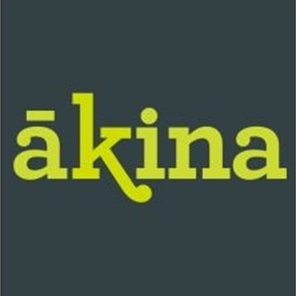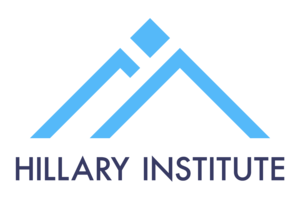Tūhura Tuarangi – Tūhura Otago Museum’s Space Mission That Made A Big Impact
Quick info:
- Tour: September 2022 – January 2025
- Total visitors to showcase: 130,307 people
- Destinations: 35 locations, including schools, libraries, museums, marae, and community centres
- Funders: Ministry of Business, Innovation, and Employment / NZ Space Agency
- Interactives: 20+ hands-on science interactives and props
- Collaborators: 10+ organisations working in space (including both research institutions and industry companies); 30+ individuals working within NZ’s space industry
- Schools: Directly engaged groups from 70+ schools

The Tūhura Tuarangi – Aotearoa in Space showcase project has officially concluded its nationwide tour, having inspired over 130,000 people across Aotearoa with interactive, hands-on space science. Developed by Tūhura Otago Museum’s science outreach team, the showcase travelled to schools, libraries, museums, and marae, bringing Aoteaora New Zealand’s space histories and achievements to life.
Tūhura Tuarangi was funded by the Ministry of Business, Innovation and Employment and the New Zealand Space Agency with the goal of sparking children’s curiosity for STEM and introducing space-related careers. Between September 2022 and January 2025, this funding enabled a team of science communicators to visit 35 community centres around Aotearoa—from Bluff to Blenheim, and Wellington to Kaitāia. The showcase tour specifically sought out places considered ‘hardest to reach’, with numerous multi-day outreach trips to remote communities. In November 2024, the showcase extended its remote reach with its first international visit, engaging the entire community of Mangaia in the Cook Islands (population: ~500 people) for their inaugural science expo, Te Rangi Ātea. This visit and an upcoming trip to Niue in June this year were funded with support from the US Embassy and the Ministry of Foreign Affairs and Trade.
Senior Science Engagement Coordinator Dr Andrew Mills, who helped develop and deliver the showcase, said that the showcase made a big impact for young people around Aotoearoa.
“Many of the children we engaged had only ever had limited access to hands-on science experiences like this in the past. Seeing their enthusiasm and curiosity for space and STEM was truly inspiring.”
“We’ve heard lovely feedback from the teachers and parents who visited the showcase with their children—the showcase has helped grow and shape their children’s interests. I remember one parent sharing that her child’s christmas list was now full of science and space toys.”
As well as showcasing the space-related mahi of over a dozen organisations around New Zealand, Tūhura Tuarangi also emphasised Te Ao Māori and Pacific perspectives on our deep connections to space.
“A key part of the showcase’s development and delivery involved embedding pūrakau and whakataukī about the night sky. Tupuna Māori used their knowledge of the night sky to navigate the ocean, plant and harvest kai, and engage with their local environments. This knowledge is still used today and part of Tūhura Tuarangi’s goal was to showcase the revitalisation of this knowledge.”
“I am particularly proud of our celestial navigation interactive that was built by the exhibit designer Doug Makinson. We’ve shown thousands of school-aged rakatahi and their whānau how the stars guide Pacific navigators as they sail their waka around Te Moana Nui a Kiwa, the Pacific Ocean.”
The showcase’s thoughtful incorporation of indigenous perspectives and wide breadth of hands-on experiences has been recognised by science engagement experts near and far. In November 2023, Tūhura Tuarangi was named a winner at the international science engagement competition, Falling Walls: Engage, and secured second place for the esteemed SCANZ Excellence in Science Communication award. These achievements further highlight the impact that this showcase has made.
The team behind the Tūhura Tuarangi showcase is committed to continuing inspiring STEM outreach programmes, despite recent cuts to nationwide initiatives by the current government. These vital programs offer communities opportunities that are crucial for the future of Aotearoa New Zealand’s tamariki, especially in STEM education.
The success of Tūhura Tuarangi highlights the strong demand for hands-on science engagement. The Museum is now focused on securing funding and strengthening partnerships to ensure these opportunities continue across Otago, Aotearoa, and the Pacific. Without proper support, many communities will miss out on inspiring and shaping the next generation of innovators.


 Bill Bennett: Download Weekly - One NZ chooses Ericsson for core network update
Bill Bennett: Download Weekly - One NZ chooses Ericsson for core network update Mountains to Sea Conservation Trust: Orange Roughy Leads The Pack As Fish Of The Year Heats Up
Mountains to Sea Conservation Trust: Orange Roughy Leads The Pack As Fish Of The Year Heats Up Hugh Grant: Retail Crime Is Out Of Control – Why Business Owners Can’t Wait For Government Action
Hugh Grant: Retail Crime Is Out Of Control – Why Business Owners Can’t Wait For Government Action SkyCity Auckland: Sky Tower Glows For International Women’s Day
SkyCity Auckland: Sky Tower Glows For International Women’s Day E tū: Deep Concerns About Undue Influence At NZME
E tū: Deep Concerns About Undue Influence At NZME Air New Zealand: Air New Zealand Chief Executive Greg Foran To Step Down In October 2025
Air New Zealand: Air New Zealand Chief Executive Greg Foran To Step Down In October 2025



